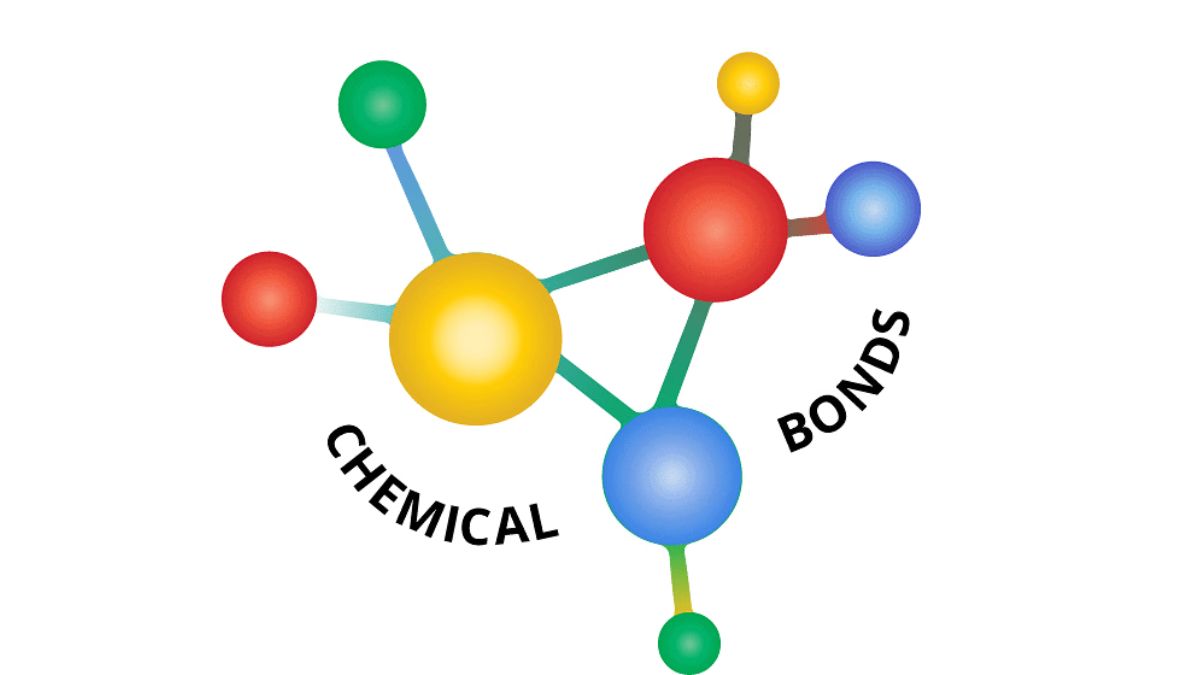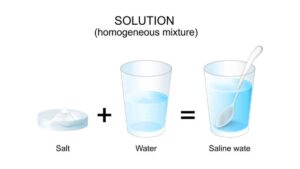The National Testing Agency will be conducting the National Eligibility cum Entrance Test (NEET 2026) at various exam centers across the nation. All the aspirants who are pursuing their class 12th and are looking forward to appearing for the admission into medical courses like MBBS and BDS must start preparing by learning all the chapters and topics mentioned in the NEET Syllabus 2026. The Chemical Bonding and Molecular Structure chapter is an important part of the NEET Chemistry Syllabus 2026, and all the aspirants for the exam can now check and access their NEET Notes for this chapter by scrolling down in the article below.
Chemical Bonding and Molecular Structure
Chemical bonding is the attractive force that holds atoms together to form molecules and compounds, driven by the atoms’ tendency to achieve a more stable, lower-energy state. This attraction is mediated by the interactions of their valence electrons, the electrons in the outermost shell. The primary types of strong chemical bonds are covalent (sharing electrons), ionic (transferring electrons), and metallic (delocalized electrons).
Molecular structure is the 3D arrangement of atoms within a molecule, determined by chemical bonds, which dictates a molecule’s properties like reactivity, polarity, and biological activity. Theories like Valence Shell Electron Pair Repulsion (VSEPR) and hybridization help predict these arrangements, which can be visualized using molecular models. Understanding molecular structure is fundamental because it explains why different molecules behave the way they do.
Types of Chemical Bonds
The main types of chemical bonds are ionic, covalent, and metallic bonds. Ionic bonds form from the transfer of electrons, creating charged ions that attract each other. Covalent bonds result from atoms sharing electron pairs, typically between nonmetals. Metallic bonds are formed in metals through a “sea” of delocalized electrons that are shared among many atoms.
1. Ionic Bond
An ionic bond is a chemical bond formed by the electrostatic attraction between two oppositely charged ions, which occurs after the complete transfer of one or more electrons from one atom to another. This process typically happens between a metal (which loses electrons to become a positive ion, or cation) and a nonmetal (which gains electrons to become a negative ion, or anion). This attraction holds the ions together in an ionic compound, which often forms a crystalline solid.
2. Covalent Bond
A covalent bond is a chemical bond formed by the mutual sharing of one or more pairs of electrons between two atoms. This sharing allows each atom to achieve a stable electron configuration, holding the atoms together through the attraction between the shared electrons and both nuclei. Covalent bonds are typically found between non-metal atoms and can be single, double, or triple bonds depending on the number of electron pairs shared.
Types of Covalent Bonds:
- Single bond (one shared pair)
- Double bond (two shared pairs)
- Triple bond (three shared pairs)
3. Metallic Bond
A metallic bond is the electrostatic attraction between a lattice of positive metal ions and a “sea” of delocalized, or free-moving, valence electrons. This bonding model explains the characteristic properties of metals, such as their electrical and thermal conductivity, malleability (ability to be hammered into thin sheets), and ductility (ability to be drawn into wires).
Theories of Chemical Bonding
Theories of chemical bonding explain how atoms connect to form molecules, with the three main theories, i.e., Lewis theory, Valence Bond Theory (VBT), and Molecular Orbital Theory (MOT). Lewis theory uses dot structures to show electron transfer or sharing to achieve a stable electron configuration, VBT describes bonding as the overlap of atomic orbitals, and MOT treats electrons as belonging to molecular orbitals formed from the combination of atomic orbitals. Each theory offers a different level of detail, from the simple Lewis model for molecular formulas to the more complex MOT for predicting magnetic properties.
1. Lewis Theory
Lewis theory is a model for understanding chemical bonding, defining acids and bases based on electron pairs. A Lewis acid is an electron pair acceptor, and a Lewis base is an electron pair donor. When they react, they form a coordinate covalent bond to create a new compound called a Lewis adduct.
2. Valence Bond Theory (VBT)
Valence Bond Theory (VBT) explains covalent bond formation as the overlap of atomic orbitals between two atoms, resulting in shared electrons. The theory proposes that a chemical bond forms when the half-filled atomic orbitals of two atoms overlap, allowing their unpaired electrons to pair up and form a stable bond. The strength of the bond is determined by the degree of this overlap. VBT also explains the geometry of molecules through the concept of hybridization, where atomic orbitals blend to form new hybrid orbitals that are oriented to form specific bond angles.
3. Molecular Orbital Theory (MOT)
Molecular Orbital Theory (MOT) is a quantum mechanical model that describes how atomic orbitals (AOs) merge to form molecular orbitals (MOs) that are delocalized over the entire molecule. These MOs are then filled with electrons according to the Aufbau principle, Pauli exclusion principle, and Hund’s rule to predict properties like bond order, bond strength, magnetic character, and stability.
NEET Important Questions –
Question 1. Which of the following is an example of a coordinate bond?
a) HCl
b) NH₄⁺
c) O₂
d) Cl₂
→ Answer: b) NH₄⁺
Question 2. Which molecule violates the octet rule?
a) H₂O
b) CO₂
c) BF₃
d) CH₄
→ Answer: c) BF₃
Question 3. The correct order of increasing bond strength is:
a) Single < Double < Triple
b) Double < Single < Triple
c) Triple < Double < Single
→ Answer: a) Single < Double < Triple
Question 4. The hybridization of carbon in CO₂ is:
a) sp³
b) sp²
c) sp
d) dsp²
→ Answer: c) sp
Question 5. The geometry of XeF₄ is:
a) Tetrahedral
b) Square planar
c) Trigonal bipyramidal
d) Octahedral
→ Answer: b) Square planar
Question 6. The number of lone pairs on the central atom in SF₆ is:
a) 0
b) 1
c) 2
d) 3
→ Answer: a) 0
Question 7. The bond order of N₂ molecule is:
a) 2
b) 2.5
c) 3
d) 3.5
→ Answer: c) 3
Question 8. Which of the following has the highest bond order?
a) O₂⁻
b) O₂
c) O₂⁺
d) O₂²⁻
→ Answer: c) O₂⁺
Question 9. Which molecule is diamagnetic?
a) O₂
b) O₂⁺
c) O₂²⁻
d) O₂⁻
→ Answer: c) O₂²⁻
Question 10. The shape of ClF₃ is:
a) Linear
b) T-shaped
c) Square planar
d) Trigonal planar
→ Answer: b) T-shaped
Question 11. The shape of NH₄⁺ is:
a) Tetrahedral
b) Trigonal planar
c) Pyramidal
d) Square planar
→ Answer: a) Tetrahedral
Question 12. The number of lone pairs in I₃⁻ ion is:
a) 3
b) 5
c) 6
d) 9
→ Answer: c) 6
Question 13. Which of the following shows hydrogen bonding?
a) CH₄
b) H₂S
c) HF
d) CO₂
→ Answer: c) HF
Question 14. Dipole moment of CO₂ is zero because:
a) C–O bonds are nonpolar
b) CO₂ is non-linear
c) CO₂ is linear and bond moments cancel each other
d) It has lone pairs on carbon
→ Answer: c)
Question 15. Which has the smallest bond angle?
a) NH₃
b) H₂O
c) CH₄
d) CO₂
→ Answer: b) H₂O
Question 16. The molecule having a zero dipole moment despite polar bonds is:
a) H₂O
b) NH₃
c) CO₂
d) SO₂
→ Answer: c) CO₂
Question 17. In which of the following compounds, the central atom uses sp³d² hybrid orbitals?
a) SF₆
b) XeF₂
c) PCl₅
d) I₃⁻
→ Answer: a) SF₆
Question 18. Which of the following molecules has both σ and π bonds?
a) H₂
b) Cl₂
c) O₂
d) NaCl
→ Answer: c) O₂
Question 19. Which statement is correct for bond order?
a) Higher bond order means weaker bond
b) Bond order 0 means molecule is stable
c) Higher bond order means stronger and shorter bond
d) Bond order is independent of stability
→ Answer: c)
Question 20. Which of the following is isoelectronic with CO₂?
a) N₂O
b) NO₂
c) SO₂
d) O₃
→ Answer: a) N₂O
| Also Check | |
| Structure of Atom NEET Notes | |
| Some Basic Principles and Techniques NEET Notes | |
| Ionic Equilibrium NEET Notes | |
| Chemical Thermodynamics NEET Notes | |
| The P block Elements NEET Notes | |









 NEET Preparation Strategy 2026: Detailed...
NEET Preparation Strategy 2026: Detailed...
 Free NEET Sample Papers 2026 PDF | Downl...
Free NEET Sample Papers 2026 PDF | Downl...
 Salt Analysis NEET Notes, Check Importan...
Salt Analysis NEET Notes, Check Importan...









